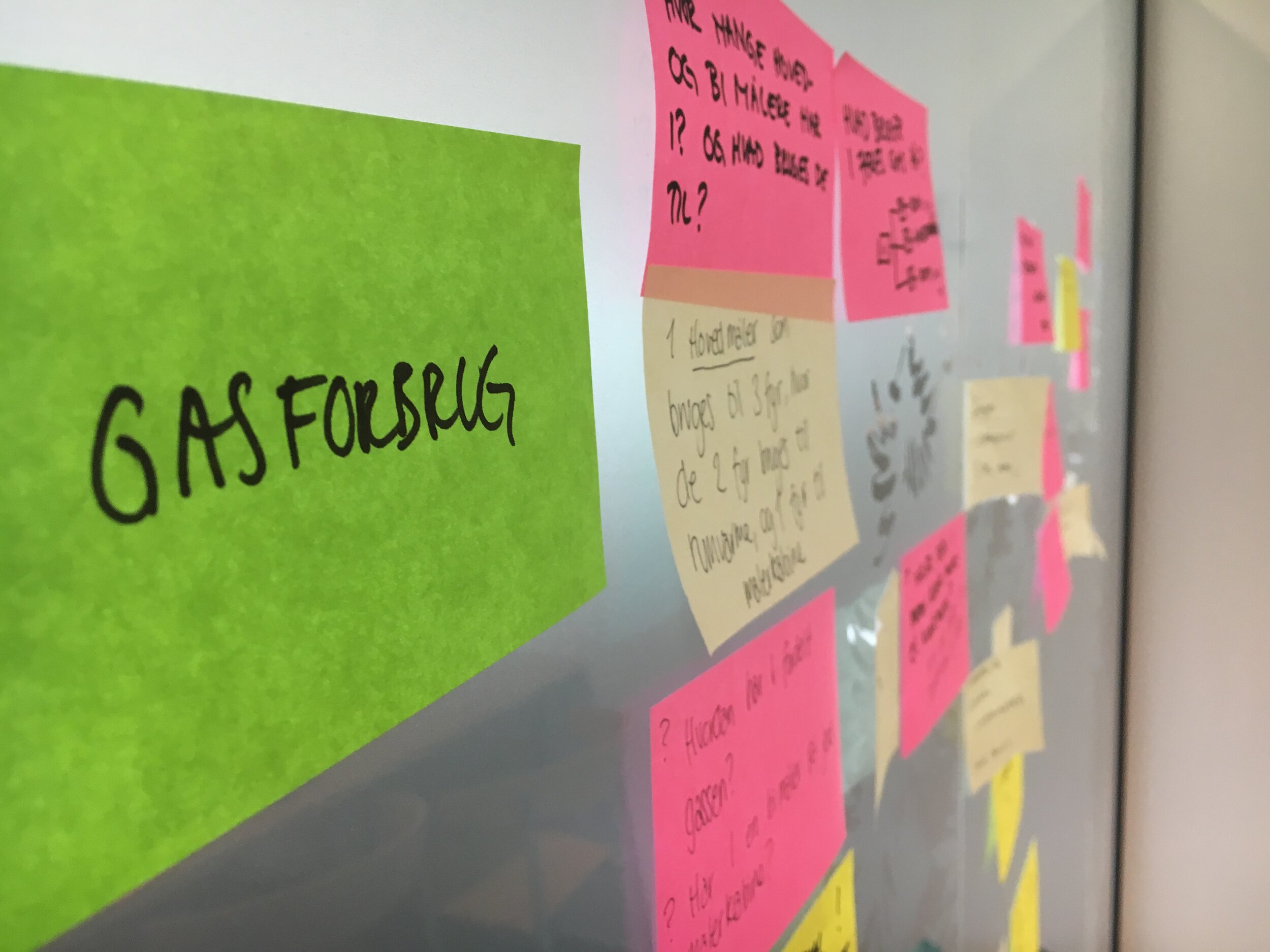HoloLens
Our task was to investigate the potential and uncover what prerequisites HoloLens as a technology requires. In addition, we had to develop a Proof-Of-Concept.
The process was characterised by an exploratory and technology-driven approach, where we 1. tested the possibilities of remote assistance calls via Skype in control situations and 2. prototyped a learning scenario of a simple energy control, which shows the complexity and the need for training in complex technical configurations.
The project initiated an internal discussion about digital transformation and a curiosity about the technology's possibilities among the case workers.
My role: UX Designer
Company: IT and Development Agency of the Danish Ministry of Taxation
TIME period: Spring 2018
Methods and tools: Market research, interviews, shadowing, process mapping, sketching
The design
Microsoft HoloLens is a pair of glasses that allow the user to see interactive 3D holograms, and which can provide a digital layer to objects or the space you are in.
Since the departement of Energy inspections had a desire to use HoloLens in control situations, our task was to investigate the potential and uncover what prerequisites HoloLens as a technology requires.
In addition, we had to develop a Proof-Of-Concept on a learning experience for training and onboarding new case workers in energy controls.
Case 1: Remote assistance
At that time, there were only a few engineers available for all of the energy inspections nationwide, if there were technical questions from the case workers.
In order to streamline the engineers' time and reduce the risk of reopening cases, we saw a potential to investigate the use of remote assistance calls during the inspection itself.
Case 2: Learning scenario
Since the challenge in an inspection situation lies in the dialogue with the company, it is an obvious opportunity to train case workers in situations before the inspection itself. Here, different technical configurations can be trained, and the tacit knowledge - which is a risk with sideman training - can be built in.
The HoloLens is mobile and flexible at the same time, which makes a learning scenario easy to use and can be used both for review but also for discussion and clarification. This will provide uniform communication across the department.
The process
The process was characterised by an exploratory and technology-driven approach. It involved a learning process about the technology itself, together with methods from design thinking to coverage of needs and domain studies to qualify solutions.
To learn about the use of HoloLens, best practice and existing use cases, we interviewed and drew on experiences from Grundfos and the virtual reality studio Virsabi.
Case 1: Remote assistance
Skype on HoloLens is a "plug 'n' play" solution, which makes it easy to test. An engineer was given a computer with the version of Skype that is supported by HoloLens. In addition, he received training in the use of HoloLens so that he could understand what the case worker was doing.
At the same time, we trained four case workers in the use of Skype on HoloLens and how to set up a mobile hotspot via their work phone. We tested 2 calls from control situations, but both failed due to lack of internet coverage.
The challenges were that during the test period there were too few control situations, and thus no opportunity to test remote assistance calls. It also questioned the necessity of using HoloLens over mobile video calls. In addition, lack of updates to Skype on HoloLens made it unusable at times.
The result was that we started a discussion about digital transformation internally. A discussion that would not necessarily have arisen if HoloLens had not created a foundation of curiosity. The case workers got an eye-opener and could suddenly see the potential of their smartphone (which they had previously left in the car).
Case 2: Learning scenario
Together with two case workers, we started with a simple energy control situation with electricity, where the case worker has to check an electric radiator. We mapped the process for the control and the situations that most often cause errors in case processing.
Next, we created a mockup and a storyboard of the virtual space and a series of multiple-choice questions. The learning scenario was developed in Unity and has built-in speak and instructions.
Our proof-of-concept showed possibilities for creating similar learning scenarios for other control units such as e.g. Customs and Special Efforts.
We recommended the department to make 360 degree videos and/or Virtual Reality rather than HoloLens when it came to control situations, in order to create the best learning space.
This would allow it to be extended to more employees and be cheaper in development resources.







